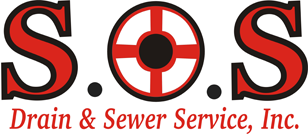Your bathroom sink is a daily necessity, but it can quickly become a source of frustration when the drain becomes clogged. Clogged sink drains are not only inconvenient but can also lead to costly repairs if left unaddressed. In this blog, we will explore the importance of maintaining a clean J-Line pipe in your bathroom sink and offer some tips on how to clear a clogged drain effectively.
Understanding the J-Line Pipe
Before we delve into the importance of keeping your J-Line pipe clean, let’s clarify what it is. The J-Line pipe is a component of your bathroom sink’s plumbing system. It connects the sink basin to the larger sewer or septic system in your home. Its distinct shape resembles the letter “J,” hence the name. This pipe plays a crucial role in directing wastewater away from your sink and into the sewage system.
Why Is the J-Line Pipe Important?
The J-Line pipe may seem like an inconspicuous part of your plumbing, but it serves a vital function. Here’s why it’s essential to keep it clean and free from clogs:
- Prevents Blockages: The J-Line pipe is the last line of defense against clogs. If it becomes obstructed, it can cause backups and slow drainage. This can lead to unpleasant odors and water damage in your bathroom.
- Maintains Proper Drainage: A clean J-Line pipe ensures that water flows smoothly from your sink to the sewer or septic system. This prevents water from pooling in the sink and helps maintain good hygiene in your bathroom.
- Avoids Costly Repairs: Neglecting the J-Line pipe can lead to more significant plumbing issues down the line. If the pipe becomes severely clogged or damaged, you may need professional plumbing services to repair or replace it, resulting in costly bills.
The Culprit: Hair and Debris
One of the most common causes of J-Line pipe clogs is the accumulation of hair and debris. Every time you wash your face, brush your teeth, or shave, some hair and small particles of debris inevitably find their way down the sink drain. Over time, these particles can accumulate in the J-Line pipe, leading to blockages.
How to Clear a Clogged Bathroom Sink Drain
Now that we understand the importance of a clean J-Line pipe, let’s explore how to clear a clogged bathroom sink drain effectively:
- Remove the Stopper: Start by removing the sink’s stopper or drain cover. Most bathroom sinks have a removable stopper that can be easily unscrewed or lifted out. This step will give you access to the drain.
- Use a Plunger: If the clog is not severe, you can try using a plunger. Place the plunger over the drain and create a tight seal. Push and pull the plunger vigorously to create suction and dislodge the blockage.
- Boiling Water: Boil a pot of water and carefully pour it down the drain. The hot water can help dissolve soap scum and loosen clogs. Be cautious when handling boiling water, and avoid splashing.
- Baking Soda and Vinegar: Combine half a cup of baking soda with half a cup of vinegar. Pour this mixture down the drain and cover it with the stopper for about 15 minutes. Then, flush it with hot water. This natural remedy can break down clogs and remove odors.
- Use a Drain Snake: If the clog persists, consider using a drain snake or auger. Insert it into the drain and turn the handle to break up or retrieve the blockage. Drain snakes are available at most hardware stores.
Preventive Measures
To prevent future clogs in your J-Line pipe, follow these preventive measures:
- Install a Drain Screen: Place a drain screen or hair catcher over your sink’s drain to catch hair and debris before they go down the pipe.
- Regular Cleaning: Clean your drain screens regularly to ensure they don’t become clogged themselves.
- Dispose of Debris Properly: Dispose of hair, soap residue, and other debris in a trash can rather than allowing them to go down the sink.
Maintaining a clean J-Line pipe in your bathroom sink is crucial for proper drainage and preventing costly plumbing issues. By being mindful of what goes down your sink drain and following the tips for clearing clogs, you can keep your bathroom sink in excellent working condition. Remember, a little preventative maintenance goes a long way in preserving the functionality of your plumbing system.








